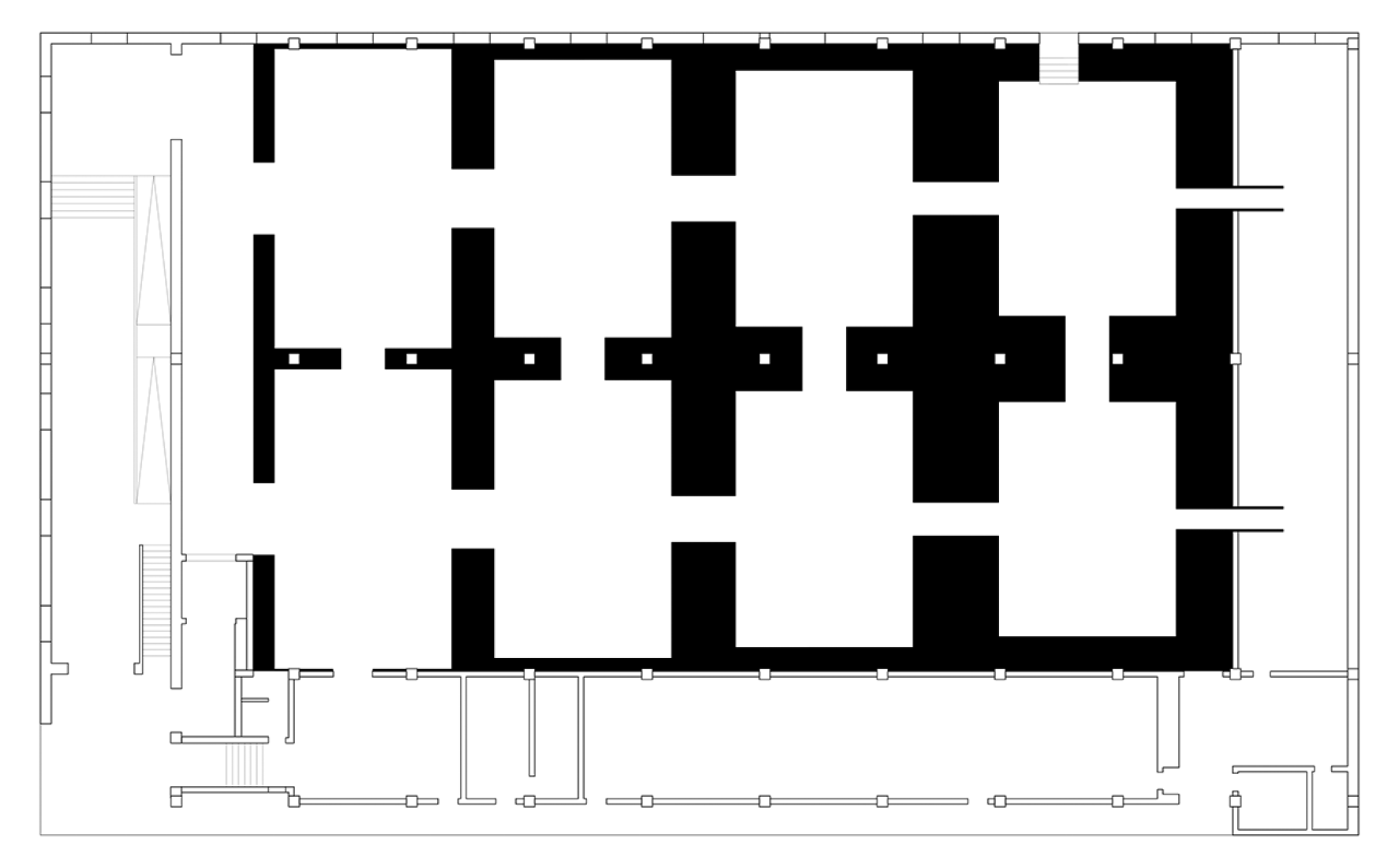The interiors of Infinite Palace, designed by AMO, are clad with a blue and black marble effect, transforming the volume into a disorienting three-dimensional landscape. The floor is lined with geometric aluminum inserts that provide a sense of continual movement and delineating the spatial configuration in this performance space for Prada.
Team AMO.- Cedric van Parys, Giacomo Ardesio, Ippolito Pestellini Laparelli (Partner), Miguel Taborda.
Description of project by AMO
The existing room is disguised into a classic enfilade of rooms, gradually changing proportions as in an abstract mannerist perspective. As opposed to a single stage, the new sequence of spaces multiplies and fragments the show into a series of intimate moments
The progression through the connected rooms simulates endless repetitions and symmetries, while providing the illusion of an infinite palace. As the models move linearly across the enfilade the audience, divided into small groups, are pushed to close and intimate proximity with the collection.
Blue and black (false) marble cover the floors and walls transforming each space into a tridimensional excavation. In this disorientating landscape aluminum geometric inserts in the ground mark the sequence of spaces.
Description by PRADA
This first part of the Autumn Winter 2015 fashion show continues Prada’s analysis of the relationship between men and women. What are the unexpected possibilities, the various relationships, that may occur between the way men and women can or would dress? The way they represent themselves? This is a subject always under investigation.
The influences of one upon the other are non-linear, asymmetrical, unobvious but always profound. Gender is a context and context is often gendered. At times, the extra inspiration comes, ultimately, from women bur it can also happen the other way around.
Such similarities and differences are the spirit being presented here and lead to cross- references of an idea and the freedom to interpretation.
These shows are the perfect moment to analyze this subject more deeply to measure what the genders share, what they take from each other.
Everyday life reminds us of the many nuanced and porous exchanges that have historically proliferated in the gender field and obviously in life.
Today, more than ever, it is an evolving and essential spirit for the coming Prada seasons.












































